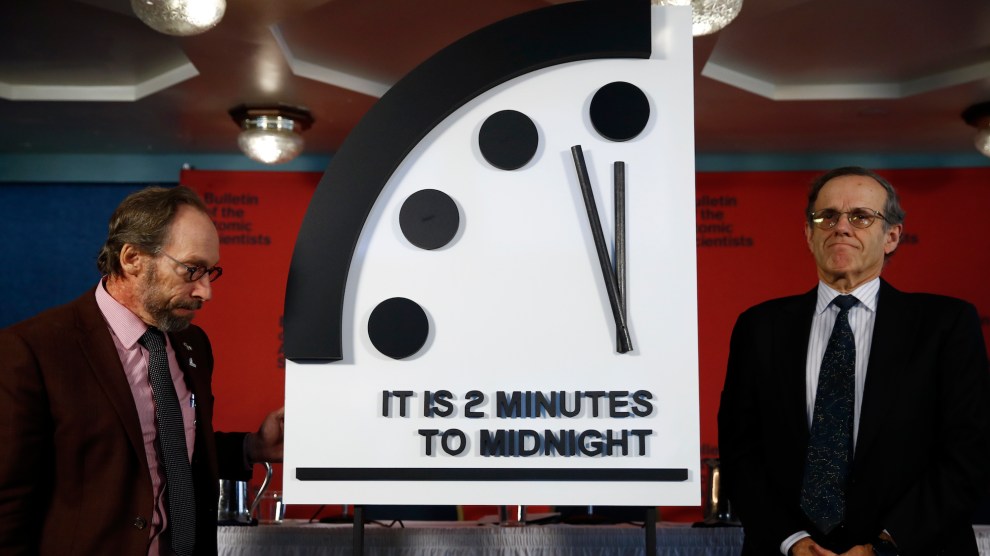
The Bulletin of the Atomic Scientists unveils this year's Doomsday Clock in Washington, DC.Carolyn Kaster/AP
The minute hand on the Doomsday Clock now rests at two minutes to midnight, the closest it’s been since the earliest days of the Cold War. For more than 70 years, the Bulletin of the Atomic Scientists has used the clock as a simple illustration of the technological threats to human survival—first nuclear weaponry and now including climate change—in hopes of abolishing them.
A year ago, the annual resetting of the clock came on the heels of President Donald Trump’s inauguration. The Bulletin marked the occasion by setting the clock forward 30 seconds, to two-and-a-half minutes to midnight—the closest it had been since the United States and the Soviet Union tested the first hydrogen bombs in 1952 and 1953.
Until today. With the clock again resting at peak-Cold War levels, the Bulletin warns of a world menaced by nuclear proliferation, escalating bombast from the United States and North Korea, and the uninterrupted march of climate change:
In 2017, world leaders failed to respond effectively to the looming threats of nuclear war and climate change, making the world security situation more dangerous than it was a year ago—and as dangerous as it has been since World War II.
The greatest risks last year arose in the nuclear realm. North Korea’s nuclear weapons program made remarkable progress in 2017, increasing risks to North Korea itself, other countries in the region, and the United States. Hyperbolic rhetoric and provocative actions by both sides have increased the possibility of nuclear war by accident or miscalculation.
But the dangers brewing on the Korean Peninsula were not the only nuclear risks evident in 2017: The United States and Russia remained at odds, continuing military exercises along the borders of NATO, undermining the Intermediate-Range Nuclear Forces Treaty (INF), upgrading their nuclear arsenals, and eschewing arms control negotiations.
The clock’s brightest moment was in 1991 when, in the post-Cold War afterglow, it was set at 17 minutes to midnight. But since then, the minute hand has consistently inched closer to indicating we’re totally screwed. The exception was in 2010, mere months after President Obama won the Nobel Peace Prize. By 2012, the Bulletin walked back its brief flash of optimism. It hasn’t reversed course since.
You can read the Bulletin’s full statement on what prompted this year’s alarming update:












